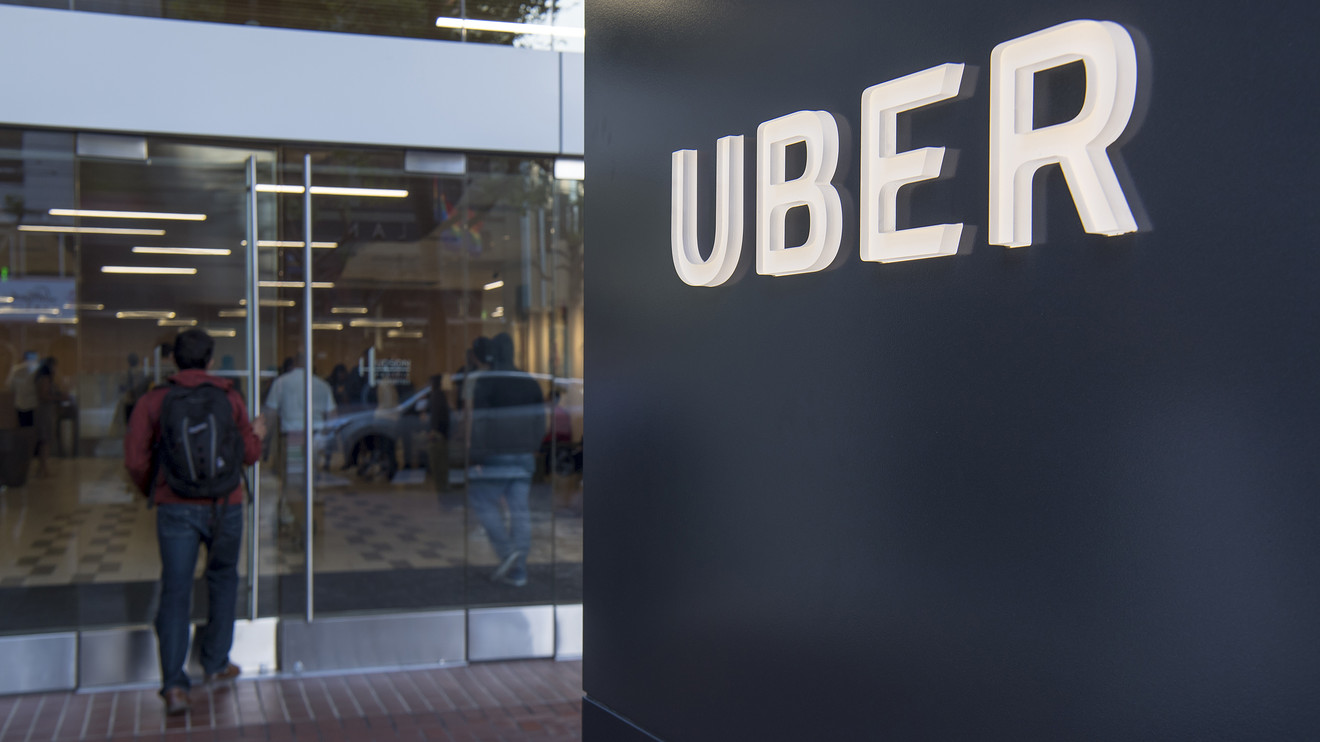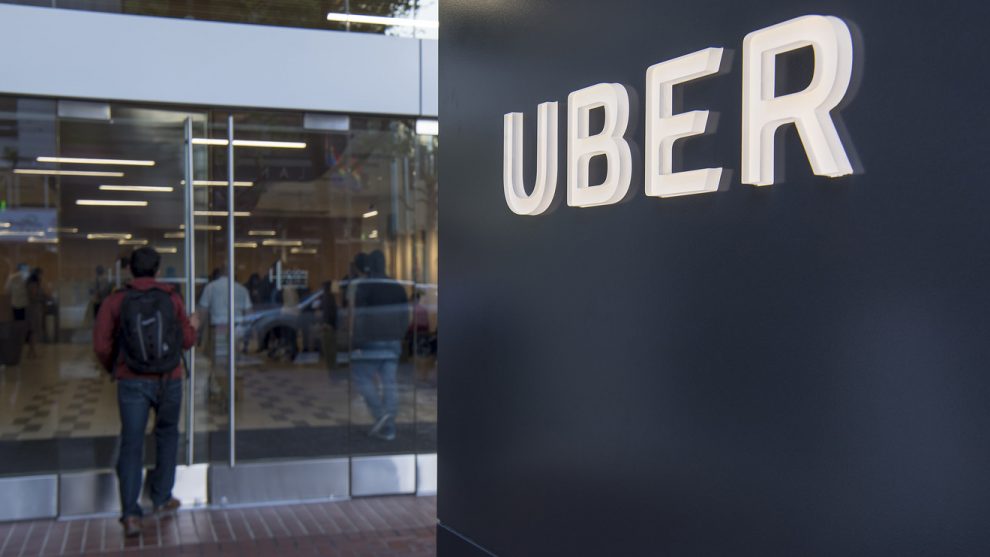
Uber Technologies Inc.’s mammoth initial public offering is official, and the company will raise more than $8 billion but end up well short of the $100 billion valuation that some expected.
The ride-hailing giant priced its IPO on Thursday afternoon at $45 a share, raising a minimum of $8.1 billion and putting Uber’s UBER, +0.00% IPO well behind other big offerings on the U.S. market in recent years. Facebook Inc. FB, -0.47% raised $16 billion through its 2012 offering, while Visa Inc. V, -0.59% raised almost $18 billion in 2008 and Alibaba Group Holding Ltd. BABA, -0.31% raked in roughly $25 billion in 2014.
Uber said there will be 1,676,959,021 shares outstanding after the IPO, excluding items including options, restricted stock units and warrants, which would place its initial valuation just higher than $75 billion based on a basic market-capitalization method. There are many ways to calculate a valuation, and other figures could be higher based on shares that are expected to vest after the IPO closes and other factors.
Underwriters — led by Morgan Stanley, Goldman Sachs and BofA Merrill Lynch — have access to another 27 million shares offered by selling shareholders to cover overallotments, which could push the total raise higher, while not putting any more money in Uber’s coffers. Uber shares are expected to begin trading Friday on the New York Stock Exchange under the ticker “UBER.”
PayPal Holdings Inc. PYPL, +0.61% has agreed to invest $500 million at the IPO price in a private placement, adding more to Uber’s total take, while affiliates of the SoftBank Vision Fund 4726, -0.81% , Toyota Motor Corp. TM, -2.00% and Denso Corp. 6902, -0.83% will together invest $1 billion in a newly formed entity for Uber’s autonomous-driving efforts.
Read: Uber, 2 years after getting spanked, acts like a grown-up in its IPO
With the IPO poised to be one of the largest in history, Uber’s financial and general business metrics will undoubtedly come under great scrutiny on Wall Street. And investors will have their hands full as they try to make sense of the company’s business outlook: Uber’s prospectus includes 290-plus pages of commentary and information before the financial appendix even begins.
Here are five important things to know about Uber and its plans to go public.
A sprawling business
Uber was launched as an on-demand equivalent to taxis, but the company’s business has since taken on many different forms. In addition to offering ride-hailing services via cars, the company has its “New Mobility” offerings, which encompass bike and scooter options. Uber also operates a food delivery business, Uber Eats, which competes against Grubhub Inc. GRUB, +0.15% and Square Inc.’s SQ, -1.28% Caviar.
The company said that it’s trying to apply its on-demand model to the shipping industry as well, through a program called Uber Freight, which “connects carriers with the most appropriate shipments available on our platform, and gives carriers upfront, transparent pricing and the ability to book a shipment with the touch of a button.”
Mobility continues to be a theme as Uber looks for new applications for its more traditional business of ride-hailing. A year ago, the company launched Uber Health, which helps health-care agencies arrange rides for patients. The company is also trying to make its ride-hailing service more of an option for corporations, through tools that allow companies to book rides for employees even if those workers don’t have the Uber app.
Many layers of financials
With so many different business areas, Uber will report its financial results in part by including uncommon metrics. For example, while Uber will give its overall revenue, it will also provide a number for “core platform adjusted net revenue.” The company’s core platform “consists primarily of ride-sharing and Uber Eats,” the company said in its prospectus, and this adjusted revenue metric strips out things like excess driver incentives and referrals.
Revenue rose to $11.3 billion in 2018 from $7.9 billion a year earlier, an increase of 43%. But Uber’s revenue more than doubled in 2017, so the company’s growth rate is slowing considerably. The trends are similar for the core platform as well.
From 2017: Uber believes it has SEC nod for earnings approach that mirrors business model
Uber’s take rate, which represents the portion of bookings that the company holds on to, will be calculated using the core-platform adjusted metrics. Uber said that its core platform take rate, which was 20% last year, can be calculated by looking at core platform adjusted net revenue as a portion of gross bookings. Gross bookings represent the dollar value of ride-sharing, “New Mobility” rides, Uber Eats deliveries and freight shipments, without adjusting for discounts and refunds.
Like Alphabet Inc. GOOGL, -0.24% GOOG, -0.33% , Uber will classify some of its newer ventures in an “Other Bets” category. In Uber’s case, this means that areas like Uber Freight and New Mobility (bikes and scooters) will be siloed into a separate area to give investors a better sense of how the company’s more proven businesses are faring. While Other Bets revenue climbed to $373 million in 2018 from $67 million, primarily due to growth in Uber Freight, the company said that it expects overall losses to grow in the near term as it invests in Other Bets and autonomous driving.
Of course, these aren’t the only things to blame for the red ink on Uber’s balance sheet. The company reported $1 billion in net income last year thanks to the sale of some operations in Russia and Asia, but it posted an operating loss of $3 billion. Uber admitted that sometimes due to driver incentives, drivers take home more than Uber actually brought in from the customer for a given fare.
Tips and trips
Nonfinancial metrics are also important for understanding Uber’s business. The company will disclose monthly active platform consumers, or the number of consumers who use Uber for a ride or meal in a given month. Uber had 91 million such consumers in 2018, up from 68 million a year earlier.
Uber customers took 5.2 billion “trips” over the course of last year, though Uber has some nuances to how it counts trips. An UberPool carpool in which three customers share a ride but pay separately will qualify as three trips for the purpose of this metric. Uber Eats deliveries also count within trips. These caveats are one reason why Uber’s metrics won’t directly compare to those offered by Lyft Inc. LYFT, +4.29% , which doesn’t have a food-delivery business.
Though not crucial from an investment standpoint, tipping data was also included in the prospectus. Uber said that drivers earned $1.2 billion through the end of last year. The company introduced tipping in mid-2017.
Uber operates in 63 countries and disclosed that only 2% of those who live in these places have actually tried the company’s services.
Driver dynamics
Uber doesn’t have a great relationship with its drivers as it stands, and the company assumes that dynamic is about to get worse. “We expect driver dissatisfaction will generally increase,” Uber said, as the company’s push to improve the bottom line leads to a reduction in some of the incentives provided to drivers. Uber will pay drivers to complete a certain number of trips in a given time period.
Uber also admitted the obvious in its prospectus: If it were forced to classify its drivers as actual employees rather than contractors, that change would weigh on its financials. Employees are entitled to legal protections around wages and overtime. Companies don’t have to offer their contractors those benefits.
Read also: Meet the ‘O.G.’ Uber and Lyft drivers who could cash in on the IPOs
In general, Uber is on strange footing with its drivers: It needs them now but imagines a not-so-distant future when cars will be driving themselves to pick up passengers — most of the time.
Uber kindly makes sure to lay out that there could still be a diminished role for human drivers in an autonomous world: Autonomous cars may be good for driving along a “standard, well-mapped route in a predictable environment in good weather,” but humans could remain a cog in the Uber machine during more complicated scenarios.
“In other situations, such as those that involve substantial traffic, complex routes, or unusual weather conditions, we will continue to rely on drivers,” the prospectus says. “Moreover, high-demand events, such as concerts or sporting events, will likely exceed the capacity of a highly utilized, fully autonomous vehicle fleet and require the dynamic addition of drivers to the network in real time.”
‘Igniting opportunity’
Uber may have one-upped rival Lyft when it came to selecting an over-the-top mission statement for its prospectus. “We ignite opportunity by setting the world in motion,” Uber declared in the filing. Chief Executive Dara Khosrowshahi added that the ride-hailing giant “is a once-in-a-generation company” that isn’t “even one percent done with our work.”
In contrast, Lyft merely set out “to improve people’s lives with the world’s best transportation.”
Don’t miss: Lyft short sellers are in ‘overdrive’ after IPO
While Uber certainly has big opportunity ahead of it, the company will have to shed several reputational issues. Co-founder Travis Kalanick was forced to resign in 2017 after he was said to have perpetuated a toxic culture at the company, and Uber has since had to deal with crises around spying and sexual assault. Uber plans to release a “transparency report” concerning sexual assault and other safety issues this year.






